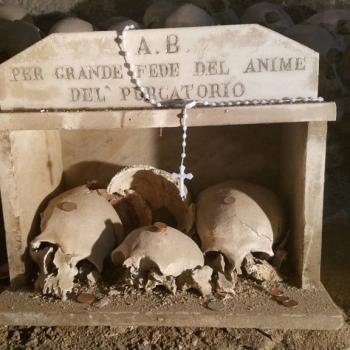
There is compelling evidence of continued Catholic decline in Latin American, which is home to 39 percent of the world’s Catholics, during the papacy of Pope Francis, the first pontiff from the region. The religious landscape in Latin America is changing from hegemonically Catholic to a pluralistic one, said Dr. Andrew Chesnut, Professor of Religious Studies at Virginia Commonwealth University.
Latin Americans today have a wide range of options to choose from in the relatively free market of faith, which leads to a significant trend towards pluralization, he said. In addition, he pointed out that this region of the world is by far the most Christian – 89 percent of Latin Americans are, the majority are Catholics and Evangelicals, and there is no other part of the planet that comes close to such a high percentage.
At his lecture at the National Autonomous University of Mexico (UNAM) “Is Latin America Still Catholic? The pluralization of the religious landscape of the region,” the expert said that Latin Americans have been abandoning Catholicism for decades. “One of the main reasons why a Latin American was elected as pope nine years ago is the long-term decline of the flock in the most Catholic region of the world.”
At UNAM’s Center for Research on Latin America and the Caribbean (CIALC) he pointed out that Pentecostalism – a branch of charismatic Protestantism – already represents 70 percent of all Latin American Evangelicals, and has multiplied to the point that eight countries already are no longer majority Catholic, and one, Honduras, has become the first nation in which Protestants, at 39 percent of the population, outnumber Catholics, at 37 percent.
In 1970, Chesnut recalled, 92 percent of Latin Americans were Catholic, although most did not attend church. Yet after half a century of precipitous decline, “the region that is home to 39 percent of the world’s 1.3 billion faithful will most likely no longer be majority Catholic by 2030.” A 2018 survey by the organization Latinobarometro found that the region is only 59 percent Catholic. “The notion that the fervor for the first Pope of the New World, a Jesuit, would result in temples full of faithful who had not attended mass for a long time has been dispelled.” Chile, for example, was 56 percent Catholic in 2013, and in just four years dropped to 45 percent.
Honduras leads the region in Catholic decline, falling from 76 percent to 37 percent in 22 years. “That nation, plagued by violence, is the first where Protestants outnumber Catholics,” he exclaimed. Uruguay, meanwhile, is the most secularized country – “It was the first in the Americas with gay marriage and legalized marijuana and is now only 38 percent Catholic.” El Salvador is 40 percent Catholic; Nicaragua 40 and Guatemala 43 percent.
In contrast, Paraguay stands out as the most Catholic country in the Americas with 89 percent of its citizens belonging to the Church; Argentina is 65 percent, but with a decline of 22 points since 1995, when it had 87 percent. Mexico, meanwhile, stands out in the survey as the only country with Catholic growth. In 1995, 70 percent of those surveyed declared themselves Catholic, and 22 years later the percentage had risen to 80 percent, making it the second most Catholic nation after Paraguay; although, he clarified, the 2020 Mexican Census reveals a Catholic population of 77 percent: “it would seem that there has been a decrease in recent years.”
Pentecostalism
Professor Chesnut explained that a good part of the Latin Americans who have left Catholicism in recent decades have converted to Pentecostalism. “The Protestant population has almost quintupled from 1970 to 2017 and 70 percent are Pentecostals (with denominations such as the Assembly of God and the Universal Church of the Kingdom of God, known in Mexico as ‘Stop Suffering,’ etc.)”. In the countries surveyed, the majority of those who left Catholicism did so before the age of 25.
New surveys show that Latin American Protestants tend to be more religiously observant than Catholics. Evangelicals, for example, go to church and pray more often. They also have a greater tendency to read the Bible outside of worship services. As a region, the Americas are the one with the greatest freedom of worship, even compared to Europe, although the countries with the least freedom are Cuba and Mexico; in the latter because the Catholic Church still has a lot of political influence, explained Chesnut.
Finally, he established that another salient trend in the Latin American religious landscape is the growing number of people, especially Millennials, who choose not to have any religious affiliation whatsoever. “They are not atheists or agnostics, but mostly young people who believe in the supernatural, but who do not belong to any specific institutional tradition.”













